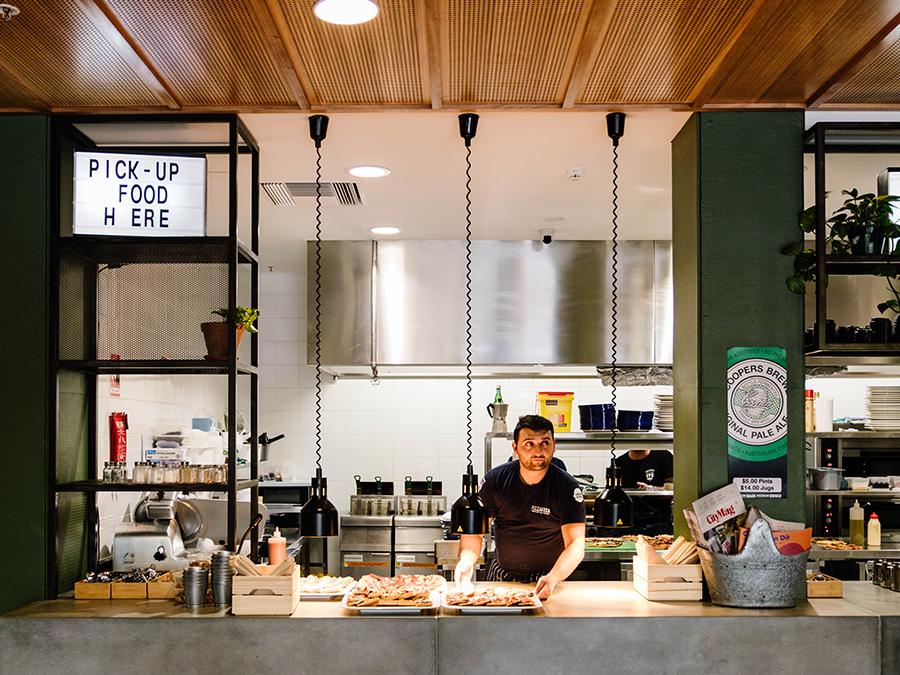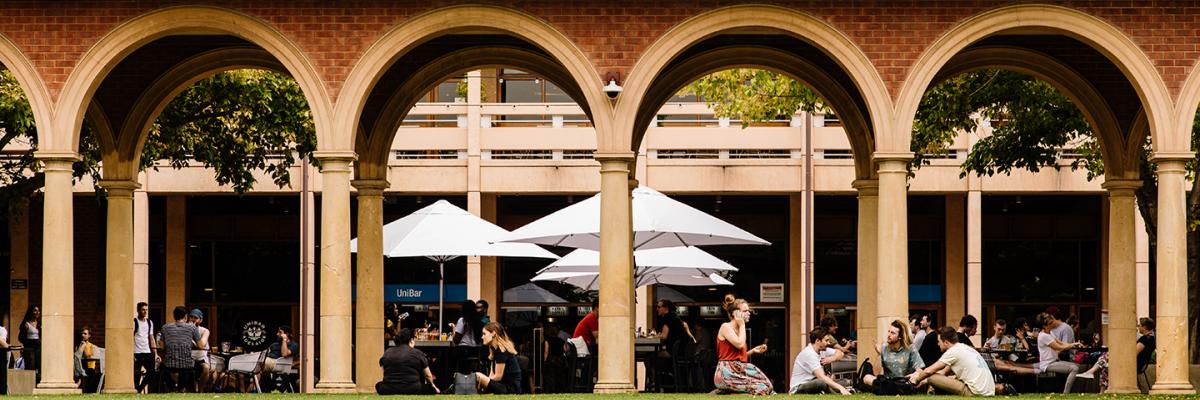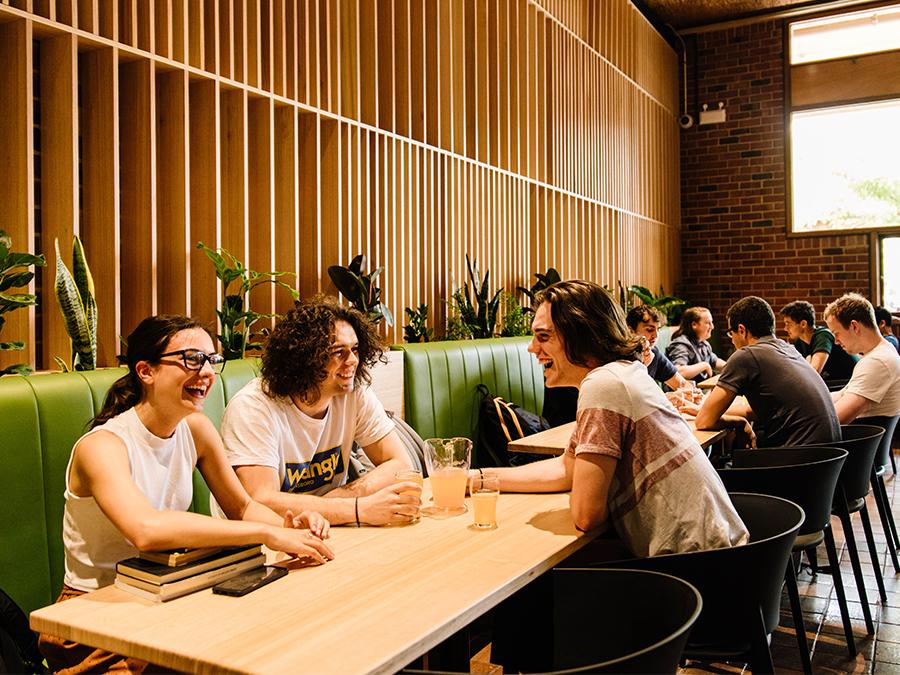New life for The Cloisters and Union House
Taking the best of the past into the future.

The University of Adelaide’s campuses serve not only as its footprints, but collectively as its beating heart and as places for students, staff and community alike to come together over academic, social and cultural endeavours.
This is particularly pertinent for The Cloisters, with a history as the grounds of campus culture. Nestled against the North Terrace campus’ River Torrens border, The Cloisters are a perpetual link between the University’s physical manifestation and community presence.
From solemn beginnings
The Cloisters were originally designed in 1928 as a memorial to acknowledge the 470 University members who served overseas during World War I.
With classically ordered Tuscan columns, arches of red brick, timber-lined ceilings and a terracotta-tiled pitched roof, The Cloisters exuded the Mediterranean-oriented architecture that was representative of the Australian architectural zeitgeist at the time.
At their inception, The Cloisters’ primary function was to frame absence, “a metaphor for those who lost their lives in the Great War,” as explained by Dean and Head of the University’s School of Architecture and Built Environment Professor Alan Peters.
Since then, the area has enjoyed an illustrious 90 year reign as the epicentre of student and staff life.
From rallies, art installations and concerts, to the day-to-day meeting of staff and students, The Cloisters enjoyed their peak during the days of the original Mayo Café, when couples “would sit on the steps and share their lunch because of the lack of space inside.”
Time for change
Jump to the present day and The Cloisters precinct retains its historic significance and Mediterranean beauty after being redeveloped earlier this year to meet the changing demands of a future-facing University.
The goal was two-fold. Firstly, to further open campus perimeters and encourage a new wave of community into the precinct. Secondly, to breathe new life into both The Cloisters and Union House, intrinsically linked by their potential to better serve a modern student body.

The idea here is that once you are in the University precinct, you should know that you are somewhere specialProfessor Peter Rathjen AO, Vice-Chancellor and President
“Universities have begun to value and encourage impact beyond the purely academic and scholarly,” explained Professor Peters.
“But permeability to the public needs to be tempered with presence.
“The idea here is that once you are in the University precinct, you should know that you are somewhere special,” he said.
What was once a mecca of University life had sadly fallen to the wayside as students and staff flocked to the Hub. The Cloisters began “showing signs of their age.”
But with a new eatery and bar in Union House revitalising the culinary offerings of the campus’ north-west and redeveloped Cloisters, the space has returned to its former glory.
Now a single level courtyard, The Cloister's heydey has been re-captured, now used as a multi-purpose space for all manner of events, and as a cultural hub for students, staff and the public to enjoy.
Fresh beginnings

Adelaide first got a taste of The Cloisters and Union House revival with Roberta's pop-up Italian restaurant in the old Mayo Café earlier this year.
As the University was transformed into a buzzing hub of festival activity, RCC Fringe operated the venue during the Fringe period.
“We thought it was a good idea to have a pop-up restaurant in the area to compliment everything else that would be happening in The Cloisters when the campus was at its most activated,” said University of Adelaide Executive Director, Infrastructure Virginia Deegan.
“It was really important to bring people through to see how amazing The Cloisters area could really be.
“It provided a great opportunity to showcase University spaces, how they can be used and what they can look like.”
The partnership between RCC Fringe and the University saw a unique opportunity to openly invite the wider community onto campus.
"An estimated 220,000 people visited the University campus during the four-week period of the RCC Fringe," said Virginia.
"One in 10 had not been to the University campus before, and the fact they could enjoy events at the intimate Little Theatre, through to the Maths Lawns staging shows like The Presets, demonstrates just how diverse the University campus can be.
“This is just the start of a broader plan to reinvigorate the Union House precinct, which is such an important part of the University’s history.”
A new chapter
Enter General Admission Entertainment (GAE).
In late March, tasked with introducing a new-look UniBar, the new operators took over a revitalised Union House space.
Replacing the former venue of the same name, General Admission’s UniBar once again saw students, staff and community members spilling out into the historic Cloisters.
“When I envisaged what going to university was like, this is what it was like,” said GAE's Kim Littler.
“We grew up watching films and TV shows that depict university life in a sandstone university. This building is also heritage listed, it’s gorgeous.
“For us, having the bar here means that people can spill out into The Cloisters on beautiful balmy days and use the lawns.”

It’s about creating a community and giving people a safe, fun place to hang out.Kim Littler, General Admission Entertainment
The new venue reignited a sleeping area of campus, with the new owners recognising the strong link between the UniBar brand, the Union House precinct, and the University’s cultural engagement.“It’s about creating a community and giving people a safe, fun place to hang out,” explained Kim.
“Each of us individually have some affiliation and some history with this university, whether it be through going to gigs at the UniBar or attending the University,” added GAE Co-Director Aaron Sandow.
“It’s not that we’re looking back and romanticising something that wasn’t there,” said Kim.“We’re looking forward but being mindful of what’s come before us and trying to complement that and also complement the new space.”
Story by Michaela McGrath
Photos by Meaghan Coles
